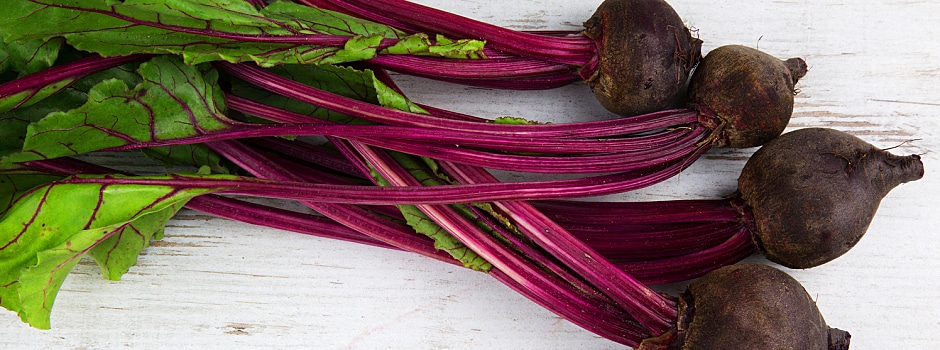Diners appreciate menus built around local and seasonal ingredients, but that can be difficult in the depths of winter—unless you turn to humble, long-storage vegetables such as beets. Beetroot benefits your bottom line with its low cost and long storage life, and its vivid color and sweet, earthy flavor open up a world of possibilities for culinary creativity. Here's why, and how, to make them a focus in your winter menu planning.
The Case for Beets
Major consulting firms, such as Baum + Whiteman, expect vegetables to continue their push to the center of the menu in 2017. Underutilized vegetables like beets are a good choice when you're looking to differentiate yourself because, let's face it, kale has already been done.
They're Local and Seasonal When Other Vegetables Aren't
It's easy to maintain a vegetable focus in summer and early autumn, when so many good options are fresh and seasonal, but it's much more challenging during the cold months. Beets are a long-storing winter option, and they're both inexpensive and dramatically colorful on a plate.
They're Healthful and Versatile
Whether it's served raw or cooked, beetroot benefits the body with a balanced array of nutrients—notably folate, potassium, and magnesium. The garnet-colored root contains no cholesterol or negligible fat, and has relatively modest quantities of carbohydrates. However health-conscious your diners may be, they're going to like what beets have to offer.
Putting Beets on the Menu
Now that you're convinced to give beets a shot, what can you do with them? Here are just a few suggestions.
Raw
Traditionally, beets are almost always cooked, but raw beets bring a sweet, juicy crunch to dishes. Shred them finely—or better yet, spiralize them—for slaws or a colorful garnish in conventional salads. For a more dramatic presentation, slice them wafer-thin on a mandoline and serve them carpaccio-style. If you have a smoothie bar, create boldly colored offerings by including beets with the fruit in your blender. Beets can even give an eye-catching makeover to bland-looking dips like hummus.
Roasted
Instead of boiling large quantities of beets, which leaches flavor and color, concentrate their flavor through roasting. Once cooked, dice them or shave them into discs. A handful of diced beetroot adds jewel-like color to salads, pilafs, or risotto when it's added at the very end. Stirring the beet into a risotto while it's cooking gives the entire dish a striking magenta hue. You can even toss diced beets with balsamic vinegar or concentrated pomegranate juice and roast them again at a high temperature to caramelize the edges.
A "Crunch" Element
If you have a fryer or a dehydrator, use beets to add a sweet and distinctively crunchy element to your dishes. Julienne, spiralize, or thin-slice the roots, then deep-fry them until they're crispy—it takes a minute or less, depending on how thinly cut they are. Once drained, the beets make a striking garnish for salads, appetizers, or entrees. Sprinkled lightly with sea salt and served with other root vegetable chips, they're an appetizer by themselves. If you cater to a health-conscious crowd, dehydrated beet chips provide a similar flavor with fewer calories.
In Soups and Stews
Borscht is one of the few common uses for beets, but it's not your only soup option. Add beets to pale cream or pureed soups—think parsnips—to give them a richer color and flavor. At the opposite end of the spectrum, you could opt for a clear, brothy vegetable or chicken soup and use spiralized beets as noodles. Their heat-stable pigment will give the broth a memorably jewel-like hue. Likewise, beets can lend deep color and flavor to your favorite seasonal stews and braises.
In Desserts
While beets aren't the most intuitive option as a dessert ingredient, they're surprisingly versatile. At the simplest level, you can use them as an all-natural food coloring for red velvet cake or other baked goods. You could also try candying diced or thin-sliced beets and using them as an element in desserts, or pairing them with berries and fresh fruits in sauces and frozen desserts. In a mousse, for example, beets balance the acidity of raspberries with a sweet earthy note that elevates the flavor of the berries.
With so many options to choose from, the humble beet is one vegetable you need to get your hands on for the winter season. Procuring it won't break the bank, and its bright color is more than enough to make a memorable meal for your guests—the flavor, in whatever way you choose to use it, will be a bonus!
